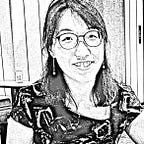The summer vacation is much awaited respite to catch up on reading. These 2 books inspire thoughts about teaching.
“Long ago, when I was a junior high school student in Iowa, I remember being taught by a biology teacher that all the chemicals that make up a human body could be bought in a hardware store for $5.00 or something like that. I don’t recall the actual sum. It might have been $2.97 or $13.50, but it was certainly very little even in 1960s money, and I remember being astounded at the thought that you could make a slouched and pimply thing such as me for practically nothing.” (Opening lines to Chapter 1, Bill Bryson, ‘The Body: A guide for occupants’ (2019)
Bryson’s introduction to his literary scientific tome about the human body was such a literary hook that I eventually bought the book on Kindle. Not many writers have the ability to translate dry scientific facts into something engaging and even entertaining. Bryson does that in his winning, humorous style and keeps the reader engaged by paving the way with small nuggets of fascinating or surprising facts about the human body. For instance:
“The skin consists of an inner layer called the dermis and an outer epidermis. The outermost surface of the epidermis, called the stratum corneum, is made up entirely of dead cells. It is an arresting thought that all that makes you lovely is deceased. Where body meets air, we are all cadavers.” (pp20)
Perhaps educators can quite literally take a leaf out from his book. In that a good lesson will consist of reader-friendly content, coherently paved with titbits of funny or unexpected information that will etch the lesson in students’ minds.
When the summer vacation looms close, I often rub my hands in anticipation of the reading and writing I will (or ought to) do. Then as the vacation trickles to an end and the new teaching semester peeks through, I wonder where the time has gone.
So Howard Becker’s book ‘Writing for social scientists- How to start and finish your thesis, book or article’ is a good reminder to persevere with whatever academic writing I have set for myself. First published in 1986, Becker’s advice still rings true. Some advice I gleaned from his book:
- Write anything. Write letters, journal entries, memos…etc.
I sometimes sense that writing anything (e.g. blogging) can get the creative juices flowing and lead to some ideas or inspiration for other kinds of writing, and hopefully some ‘academic writing’.
2. Writing requires taking some chances such as letting others see and criticize one’s work
This is a tough one. Letting others see and criticize one’s work requires firstly getting people to read my work. Moreover, putting one’s writing out there makes one vulnerable.
3. “Writing is an organizational act, done in response to whatever constraints, opportunities, or incentives the organization you write in presents to you.” (Chapter 10)
Becker is a sociologist and he writes with a keen awareness of the social forces present in institutions, jobs and work practices. I read this as how our jobs and workplace practices can discourage or encourage our writing. What we write about, how we write and if we ever get to write are a result of these social factors.
4. It is not a personal defect if one is unsuccessful.
a.k.a ‘Be kind to yourself’
5. Overcome anxiety by taking small steps.
6. Routinely rewrite.
In the book, Becker painstakingly attempted to persuade academic writers, particularly students, that the first draft is never the last. Writing happens in bits and pieces — incoherent at first, rewritten till perfection.
Now I just need to remember all that… And write!
